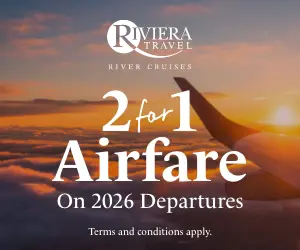Six Ways To Promote A Holguin Adventure In Cuba
by Steve Gillick
A display of local costumes during Romerias de Mayo.
Knowing that the Bay of Nipe, at Cayo Saeita in Holguin Province, is the largest “Bag Bay” in the world probably won’t sell more clients on the value of visiting Cuba. However, it does underline the uniqueness of the country and the growing emphasis in catering to the special (niche) interests of visitors to the island. (Bag Bays, or Bariya, are unique to Holguin Province. They feature a narrow deep entrance that spreads into a large lobe — just like an inflated paper bag).
In fact Holguin, Cuba’s number-three province by population, is a microcosm of what visitors can expect in many other parts of the country. FITCuba, the Annual Tourism Conference that recently took place in Holguin, emphasized the bounties available that cover relaxation, adventure, culture, education, culinary, people experiences and fun.
Here are six ways to promote the unique nature of a Holguin adventure to your clients.
1. Ecoparks.
At the small farm at Eco-park Rocazul, we started to take photos of a male peacock sitting on a fence and displaying its beautiful feathers. Someone cynically asked, “Haven’t you guys ever seen a peacock before?” To which someone cleverly replied, “Yes, but not a Cuban peacock.”
The development of eco-parks is part of Cuba’s environmental strategy, and with a nod to tourism, it’s a self-fulfilling prophecy that nature experiences capture the imagination of travelers looking to connect with a destination, through hiking, conversation, sailing by mangroves, eating local foods, spotting local birds or just enjoying the fresh air.
2. Romerías de Mayo.
The annual festival, Romerías de Mayo (The Pilgrimages of May) takes place in Holguin City on May 3. A colorful parade of costumes, dancers, singers, floats and flags is followed by a hike up the 458 steps of the Hill of the Cross (you can also drive to the top) where the sunset view of the city below and the billowing pink and white clouds overhead are inspiring. The festival components of fun and laughter have evolved out of the original intention of the event, which was to bless the town and safeguard it from natural and human disasters, by placing a cross on the hill.
3. Know your history.
Cayo Bariya is the site in Holguin Province where, according to archeologists and historians, Christopher Columbus actually landed. Excerpts from Columbus’ diaries describing the coast, the beaches and the Indian Village match the actual topography of the area. And at Cayo Bariya, Cuba celebrates its indigenous heritage in three different areas:
At a thatched-roof shelter by a cliff, a man dressed as one of the Taino people related the myth of Yaya, the god of gods and his rebellious son, Yayael, whose death resulted in water and fish spilling out of a gourd and covering the land that we know as Cuba. (This also explains why so many visitors travel to Cuba to enjoy the ocean, the beaches and the seafood.)
A second site features the “Encounter of Two Cultures” monument, where European ruins, representing the Spanish, stand next to red-earth-colored statues that represent the values of the Taino people: family, community, tobacco, rain, sun, fire and Yaya (the god of gods).
And a third site at Cayo Bariya features an outdoor archeological exhibit and re-enactment of the encounter between Columbus and the Taino Indians, along with displays of Taino culture. Many other sites in Holguin (e.g., Aldea Taina) offer stories of the Taino people, who occupied the land 10,000 years before Columbus’ arrival.
4. Birders Alert!
Putting a whole new meaning on the importance of “Twitter” to your business, there are an estimated 47 million bird-positive people in the United States, with 18 million of them actively traveling to watch and photograph birds on an annual basis. It’s not unusual to find Northern Mockingbirds, Common Grackels, Turkey Vultures and Red-Legged Thrushes in the trees around your Holguin resort. This year, Birds Caribbean is holding its Annual Conference in Cuba to see some of the 26 endemic species. Your database is probably filled with birders, so this is something you may want to investigate further.
5. All-inclusives and more.
Cuba has about 65,000 hotel rooms , and the National Plan for Economic and Social Development is calling for 108,000 more by 2030. There are boutique hotels, major hotel chains and all-inclusives. It’s always best to check whether a four- or five-star property matches the same star-level that the client is used to (four stars in one country may be two or three stars in another). Paradisus Rio de Oro, which hosted one of the evening events at FITCuba 2017, has a reputation for being a true five-star property, and one of the top-rated resorts in the country.
6. Family Ties!
Some resorts in Holguin offer a day trip to Cayo Saetia. The drive to the town of Antilla is about 90 minutes, followed by a one-hour catamaran ride (fun, sun, drinks and dance music) to the soft sand beach at Cayo Saetia, where swimming and snorkeling are available. The National Park also offers horseback riding and Jeep safaris. We took the safari and encountered an ostrich (!), buffalo, deer, antelope, horses and zebras. It was great fun!
The word on the street is that Cuba does not have the infrastructure to support mass tourism, but many positive strides are taking place. These include new hotels, road construction, staff training and a tourism-positive emphasis on connecting with the destination through fishing, gastronomy, birding, history, music, Latin dancing, rum, water activities, cigars, language lessons, photography, volunteering programs and more. The unique nature of a Holguin adventure captures the spirit of Cuba’s move to attract, retain, impress and even dazzle visitors.
























